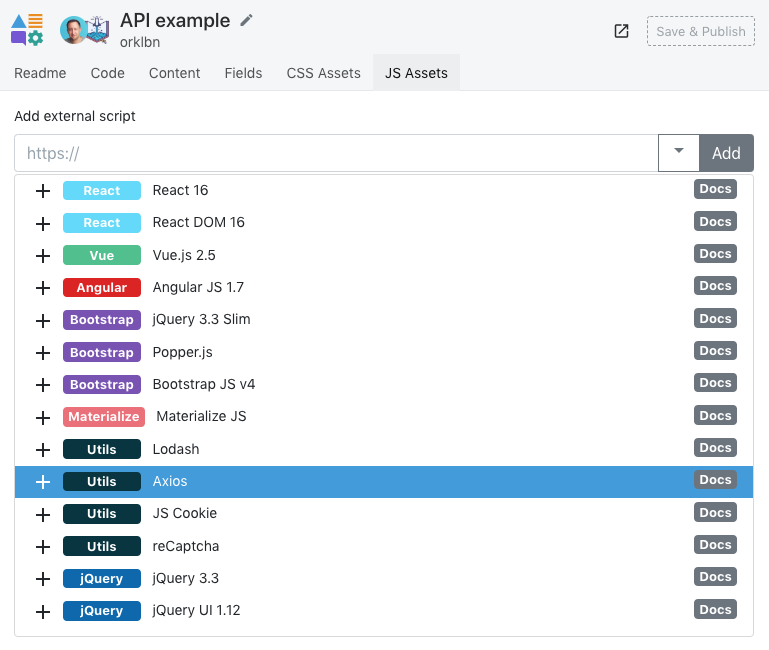In this example, we'll use a mod to get and display data from an API endpoint.
# 1. Sample endpoint
Let's say you have an endpoint that returns data about some photos:
GET https://jsonplaceholder.typicode.com/albums/1/photos?albumId=1
[
{
"albumId": 1,
"id": 2,
"title": "reprehenderit est deserunt velit ipsam",
"url": "https://via.placeholder.com/600/771796",
"thumbnailUrl": "https://via.placeholder.com/150/771796"
},
{
"albumId": 1,
"id": 3,
"title": "officia porro iure quia iusto qui ipsa ut modi",
"url": "https://via.placeholder.com/600/24f355",
"thumbnailUrl": "https://via.placeholder.com/150/24f355"
},
{
...
}
]
# 2. Making an API call from a mod
We can use Axios (opens new window) to make an API call from a mod.
Starting with a blank mod, add Axios to the JS assets so that it's available for use:

Now in the mod's JS panel, we can make an API call and log the data:
axios
.get("https://jsonplaceholder.typicode.com/albums/1/photos?albumId=1")
.then(function(res) {
console.log(res.data);
});
# 3. Adding the data to the mod's HTML
We can use plain JS or a framework like React or Vue to display the data we receive.
In this example we'll create an addImage function to add a basic image element for each entry:
// Add an image element to the mod
function addImage(url) {
const img = document.createElement("img");
img.src = url;
mod.el.appendChild(img);
}
// Fetch the data from the API
axios
.get("https://jsonplaceholder.typicode.com/albums/1/photos?albumId=1")
.then(function(res) {
// Run the addImage function for every data point returned
res.data.map(function(album) {
addImage(album.thumbnailUrl);
});
});
# 4. Live example
Here is a live example with the above code: API example (opens new window).
And the live example added to this page: